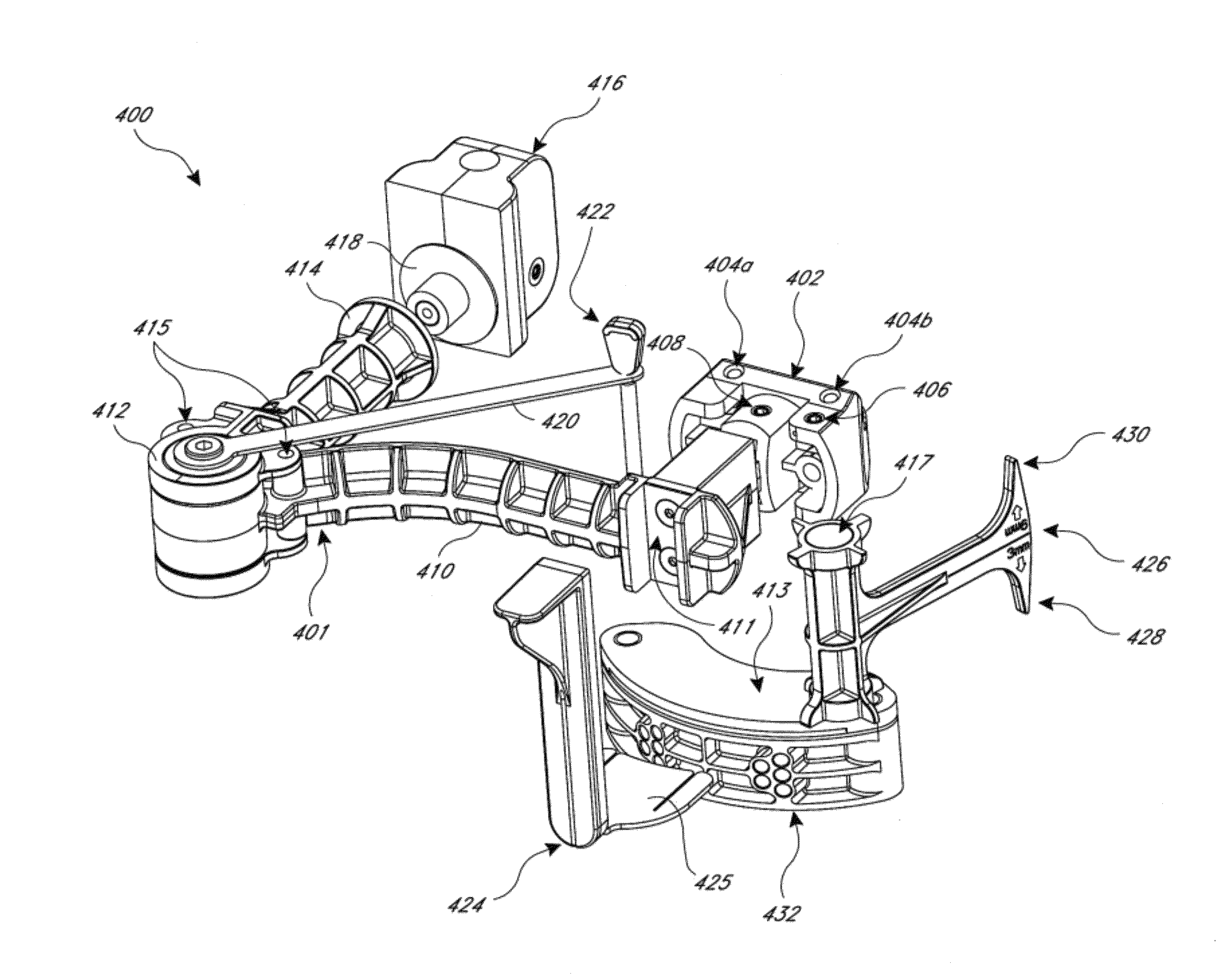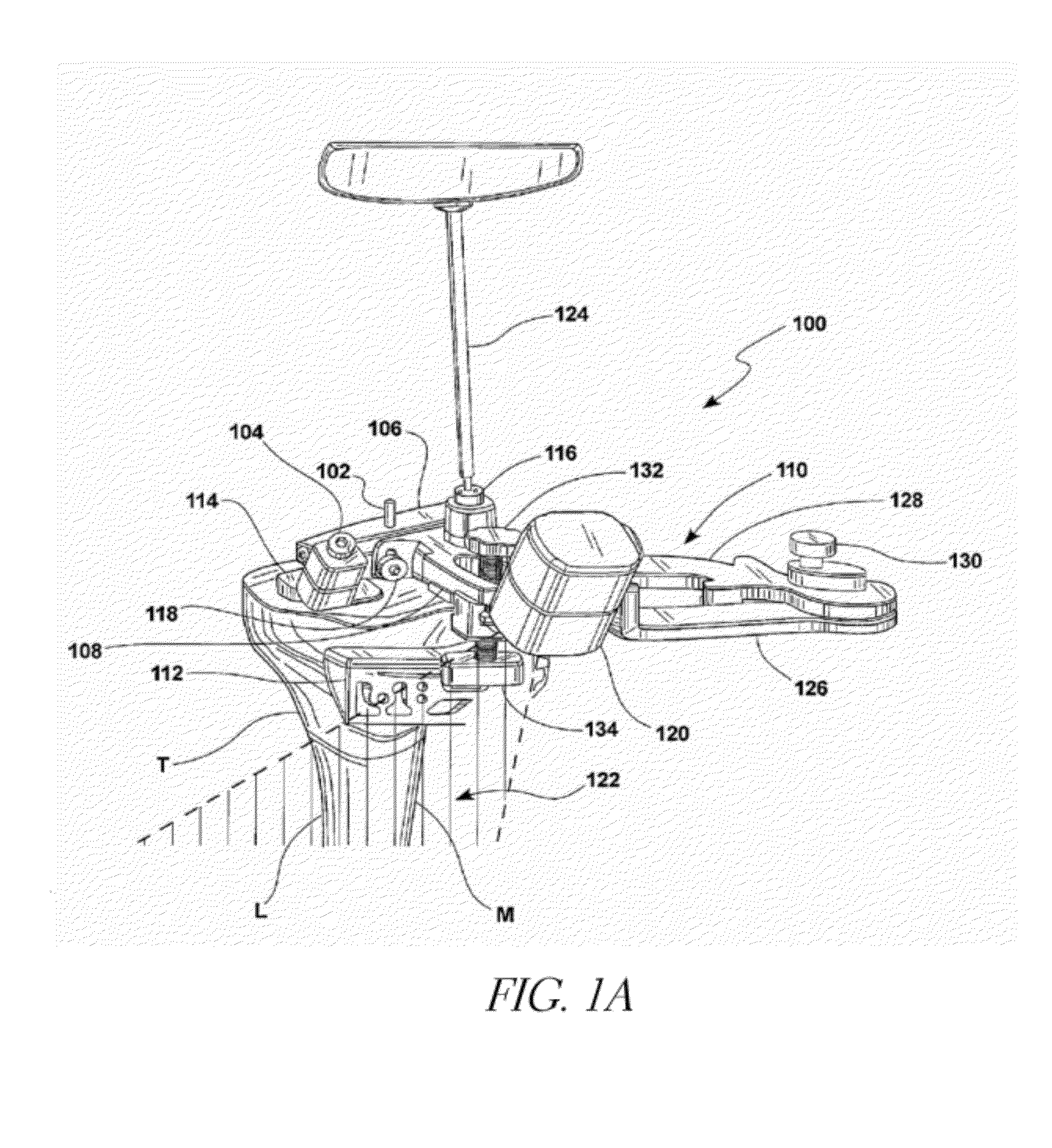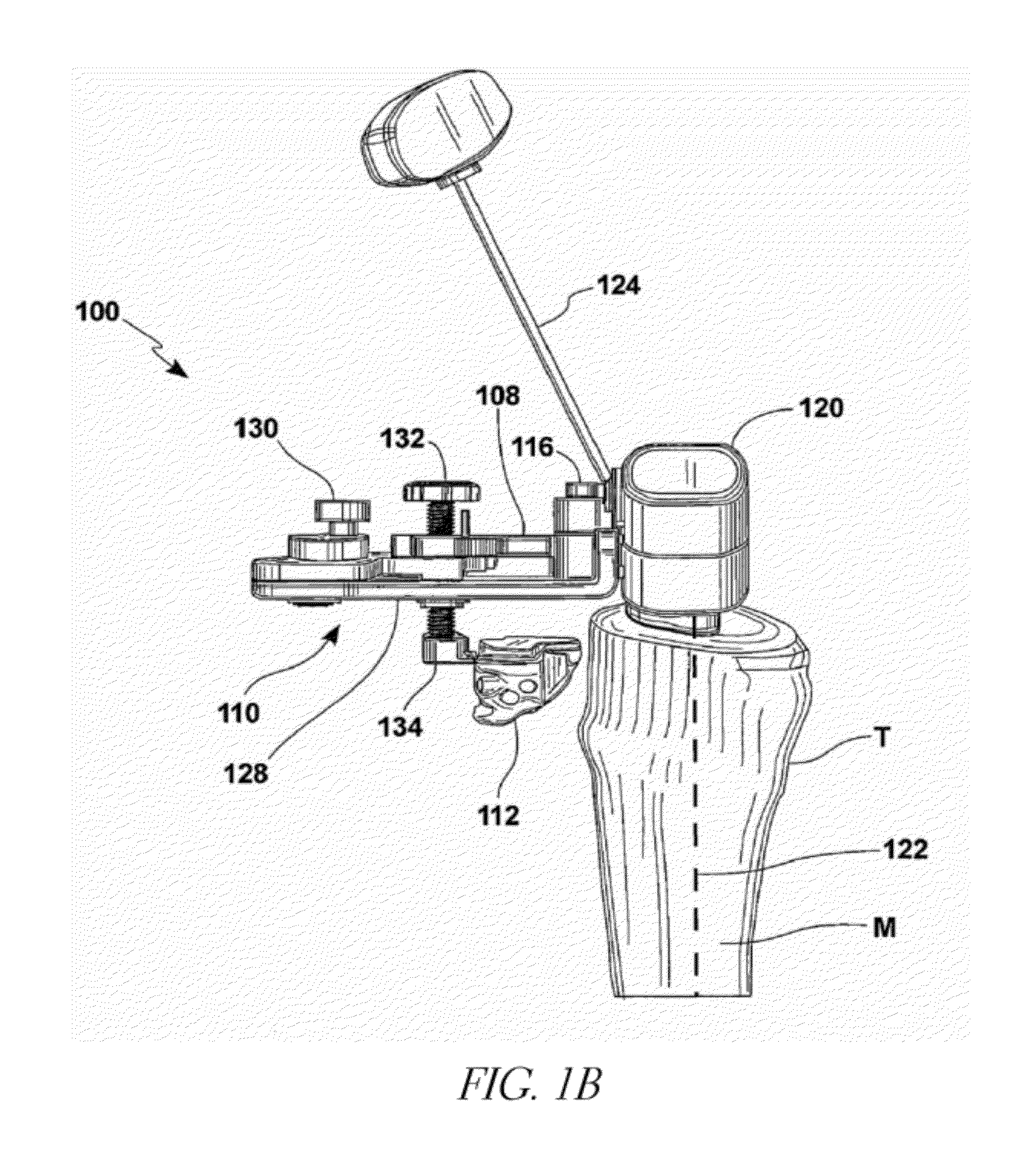Bone positioning device and method
a positioning device and bone technology, applied in the field of medical/surgical devices, systems and methods, can solve the problems of less than ideal outcomes, invasive and sometimes imprecise, and on-bone contact, and achieve the effect of enhancing the outcome of the procedure and reducing the wear and tear of the artificial knee join
- Summary
- Abstract
- Description
- Claims
- Application Information
AI Technical Summary
Benefits of technology
Problems solved by technology
Method used
Image
Examples
Embodiment Construction
[0069]The devices, systems and methods described below may be used in various embodiments to enhance and / or facilitate a total knee arthroplasty (TKA) procedure, a partial knee arthroplasty procedure, or any other suitable knee surgery procedure in which one or more cuts are made on a tibia, typically a proximal end of a tibia. Generally, the embodiments described herein provide a means for positioning a bone cut on a tibia. Although the following description may frequently refer to TKA procedures, the described embodiments may also be used for partial knee arthroplasty procedures or other knee procedures in which tibial bone cuts are made.
[0070]Referring to FIG. 1A, one embodiment of a bone cut positioning system 100 is shown attached to a tibia T. In this view, the tibia T is of a right leg and is in an anterior (front) facing orientation, with the lateral side L of the tibia T toward the left side of the figure and the medial side M of the tibia toward the right side of the figur...
PUM
 Login to View More
Login to View More Abstract
Description
Claims
Application Information
 Login to View More
Login to View More - R&D
- Intellectual Property
- Life Sciences
- Materials
- Tech Scout
- Unparalleled Data Quality
- Higher Quality Content
- 60% Fewer Hallucinations
Browse by: Latest US Patents, China's latest patents, Technical Efficacy Thesaurus, Application Domain, Technology Topic, Popular Technical Reports.
© 2025 PatSnap. All rights reserved.Legal|Privacy policy|Modern Slavery Act Transparency Statement|Sitemap|About US| Contact US: help@patsnap.com



